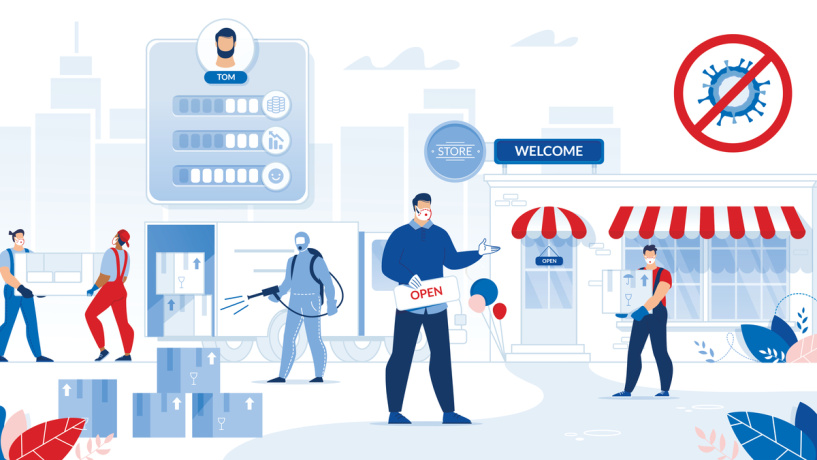Even Small Crowdsourced Projects from Teachers Make a Difference for Students

It takes as little as a $400 investment in a teacher-led educational project to improve outcomes for some students, particularly those in lower-income schools, a Ross School of Business study on the impact of the crowdsourcing platform DonorsChoose shows.
A study conducted by three Michigan Ross professors — Samantha Keppler, Jun Li and Andrew Wu — found that one funded educational project through DonorsChoose achieves, on average, a 0.4 to 1.6 percentage point increase. This translates to two to nine more students scoring at a basic level and above in all subjects in high school, and in science and language arts in primary and middle school.
“We find this effect is driven mostly by low-income schools, indicating funded projects help close the gap in educational outcomes between students at low- vs. high-income schools,” said Li, associate professor of technology and operations.
Their article will appear in an upcoming issue of the journal Management Science.
The researchers examined the impact of DonorsChoose projects for K-12 students in Pennsylvania, where large funding disparities exist between low- and high-income districts. Pennsylvania Department of Education student test scores from 2012-13 to 2017-18 school years were examined, along with information from the EdTech funding source.
Initially, the team was a bit surprised at how little investment was needed to move the needle on achievement, Wu said, but it made sense when looking at the results from an operations management perspective.
“We are not surprised that when teachers have a well-formed idea for how to improve student learning that costs only $400 to implement, this idea will pay off big because of the frontline insights that teachers have into what their students need,” said Wu, assistant professor of technology and operations and finance.
“$400 in supplies and materials given to district leaders or principals as part of a top-down policy intervention is not the same as $400 of supplies and materials given to a teacher who has specifically requested them to help students.”
The study of operations management originally comes from manufacturing. It holds that workers making small, frontline improvements to production processes can generate large differences in system performance.
“Because frontline workers are closest to the process, they can see what obstacles and failures make systems ineffective or inefficient,” said Keppler, assistant professor technology and operations, who noted that teachers have on-the-ground insights that principals, district leaders and state education officials do not.
“Teachers have small and low-cost ideas for how to remove obstacles and inefficiencies that inhibit student learning, and our study’s findings suggest that hearing these ideas is critical for improving student performance and reducing educational inequalities.”
Started by a Bronx, New York, history teacher in 2000, the DonorsChoose website says the fund has reviewed and fulfilled more than 1.7 million classroom requests. About 80% of U.S. public and charter schools have had at least one teacher post a project on the site, mobilizing nearly 5 million individual donors and resulting in funding of more than $1 billion. Recent announcements of support for DonorsChoose include corporate sponsors Bloomingdale’s, UScellular and iHeartMedia, and celebrities Bill Gates and Reese Witherspoon.
Commonly requested resources include books, technology, supplies and furniture, consumable supplies (markers, paper, snacks) or durable goods (printers, calculators, headsets, a set of novels). When teachers put together a project request they select desired items from vendors that work with DonorsChoose (e.g., Amazon, Staples, Blick).
For this study, the team reviewed impact statements detailing projects written by more than 13,000 teachers, some who wrote multiple requests.
“After analyzing over 20,000 teachers’ impact statements, we find for lower-income schools, projects that improve student knowledge retention through better focus and fewer distractions or make repeated and shared use of resources have the largest impact,” Wu said. “In higher-income schools, teachers’ projects focusing on differentiating lessons across substudent groups have the highest impact.”
Before crowdsourcing and other similar programs, teachers who wanted extras for their students often paid out of pocket, which kept many from dreaming very big for their students. Even though successful, the researchers warn that institutionalizing these grassroots efforts would not be the way to go.
“It probably is not a good idea to force teachers to crowdfund—it can be time consuming and forcing teachers to do it may dilute the quality of ideas,” Keppler said.
After all, crowdfunding platforms like DonorsChoose are one of the few places teachers can currently go to express their ideas and get support for them, Li said.
“While crowdfunding shouldn’t be a substitute to system-wide reforms, it certainly is an effective complement to the existing system,” she said.







